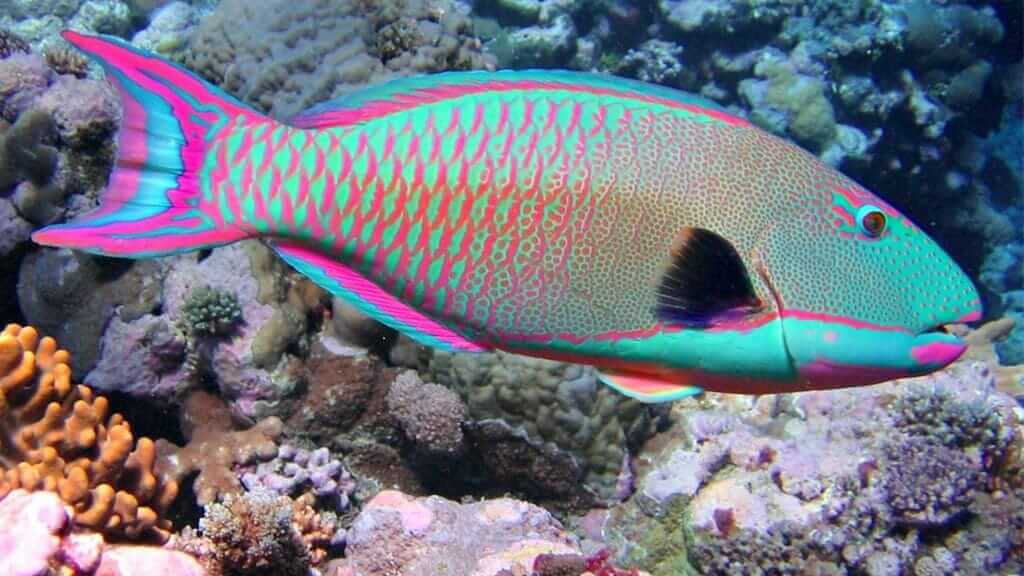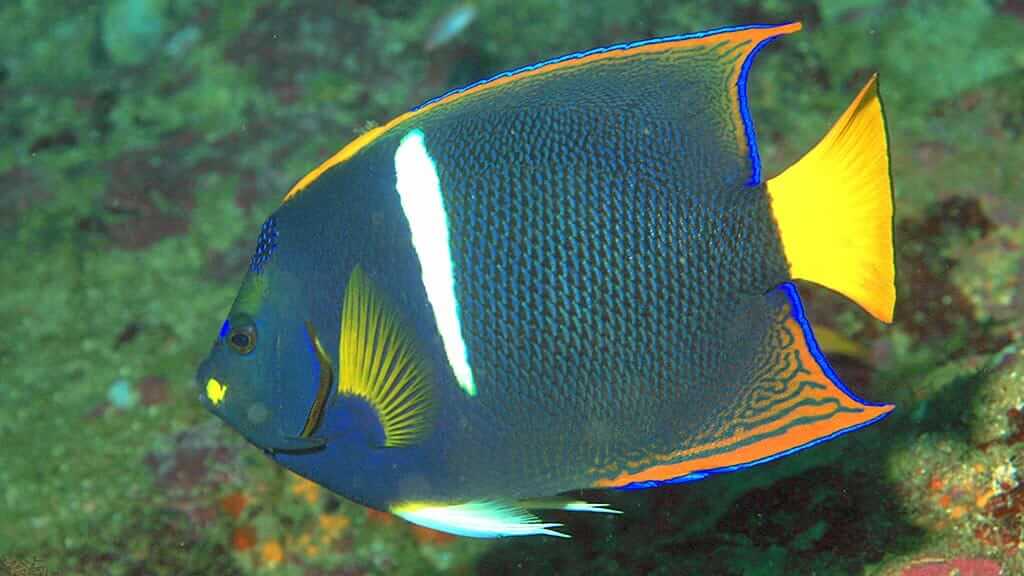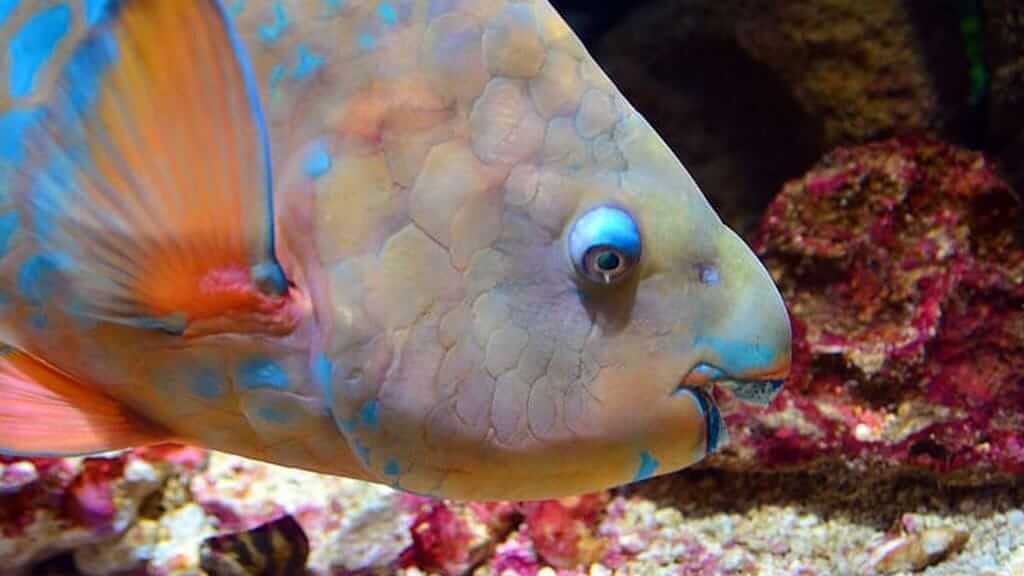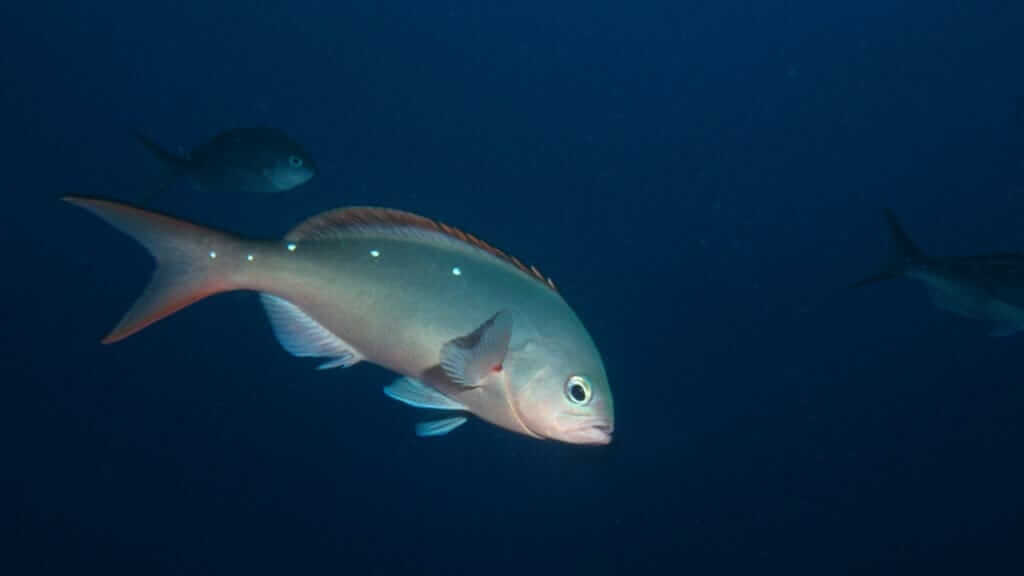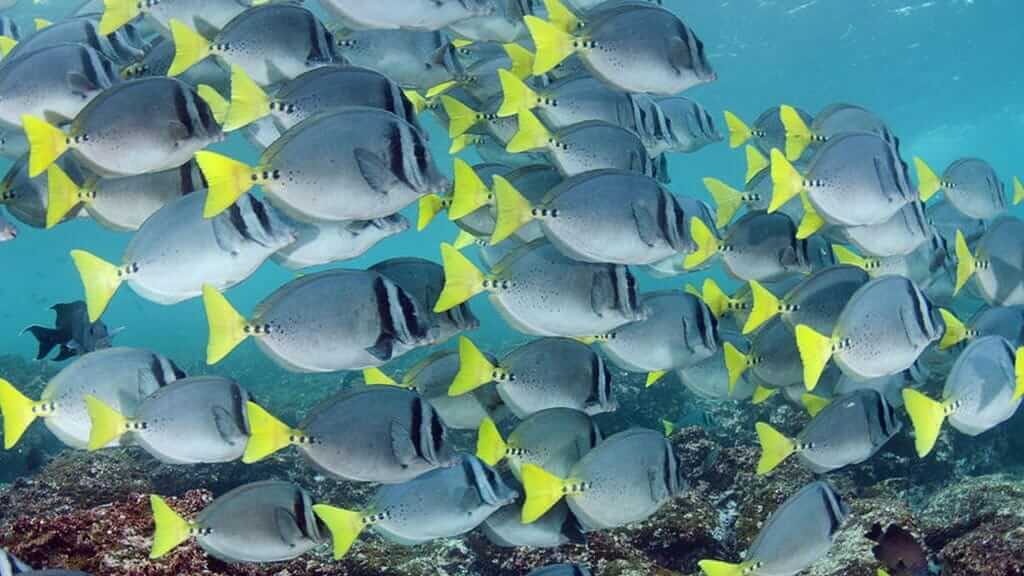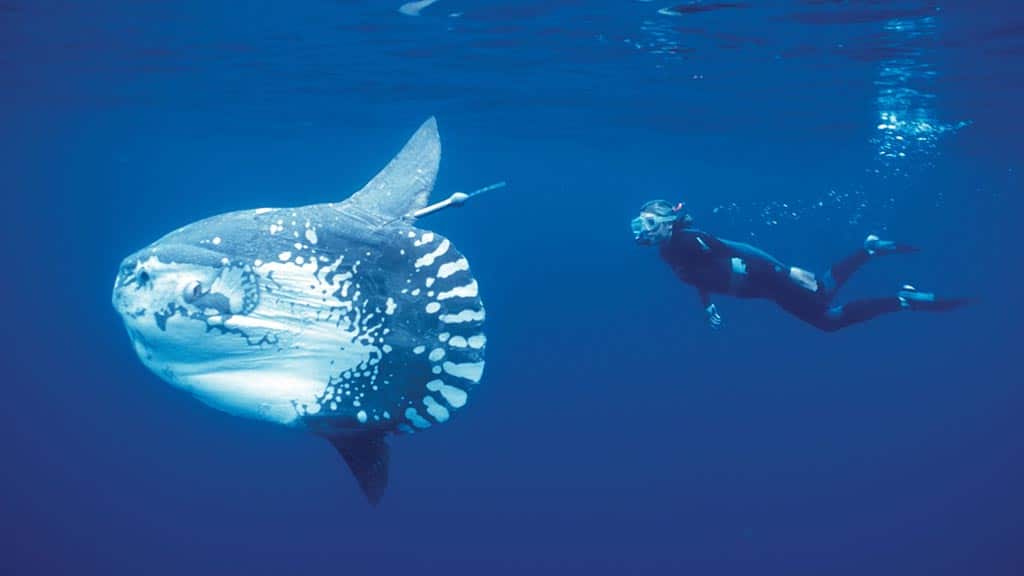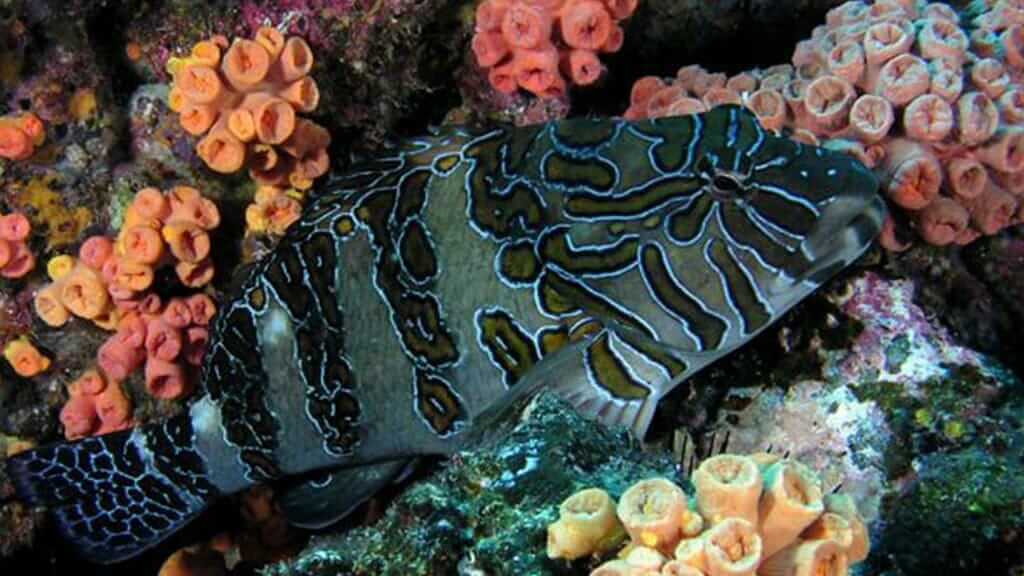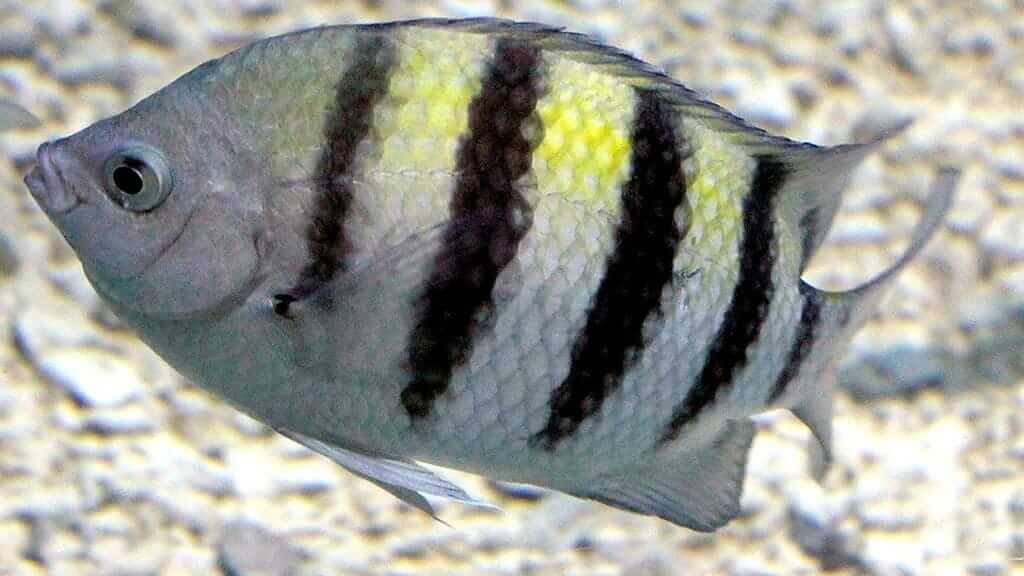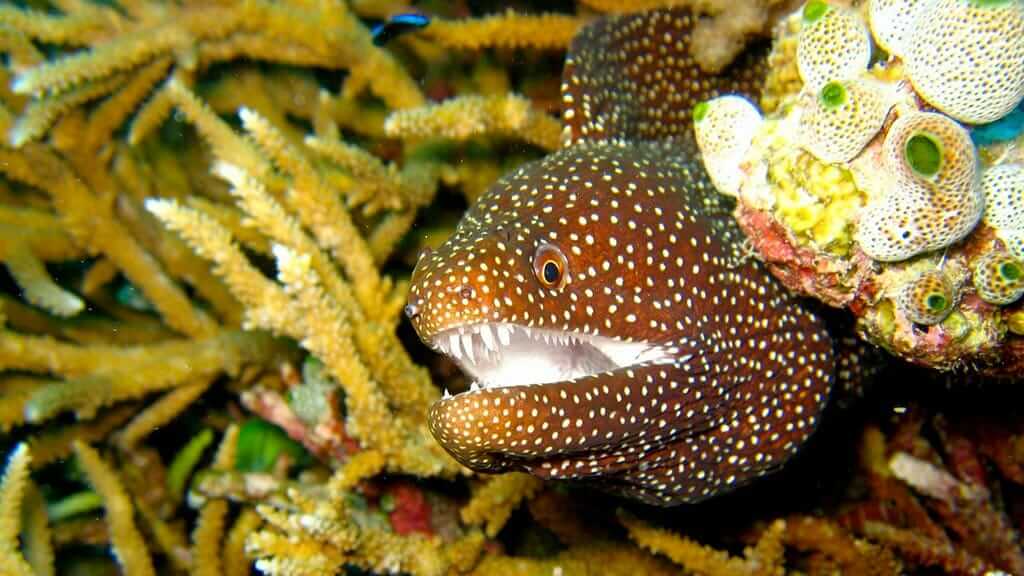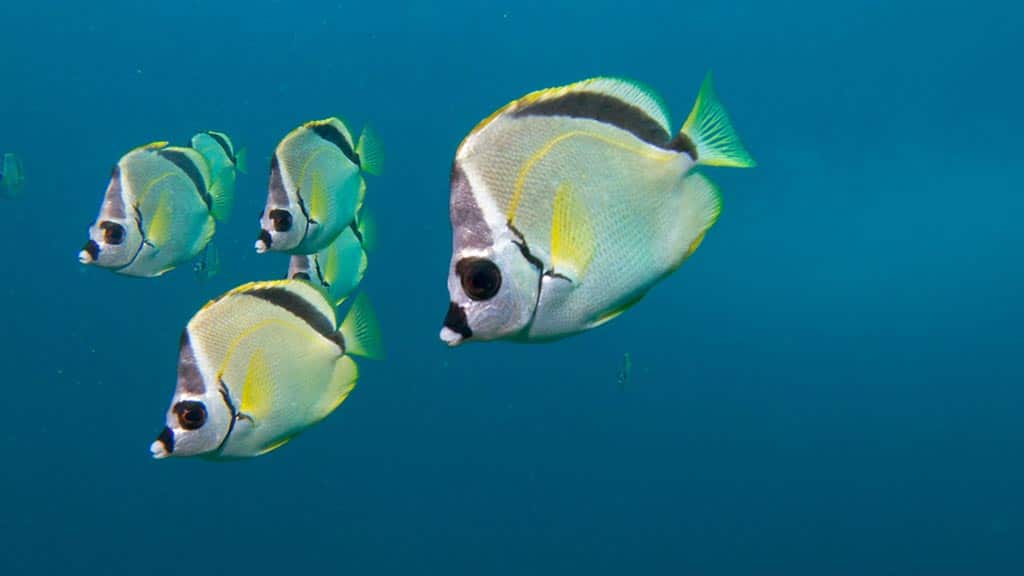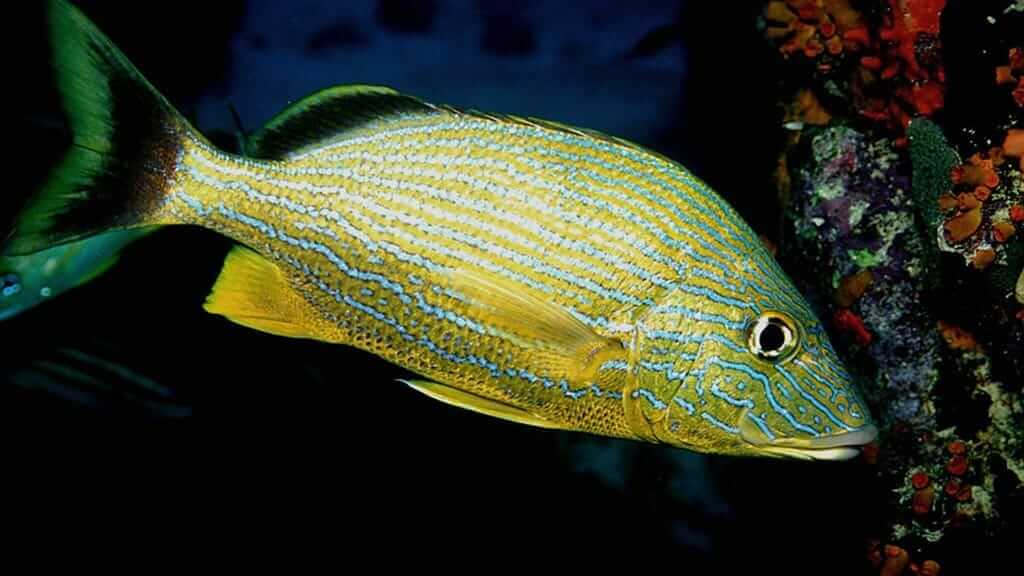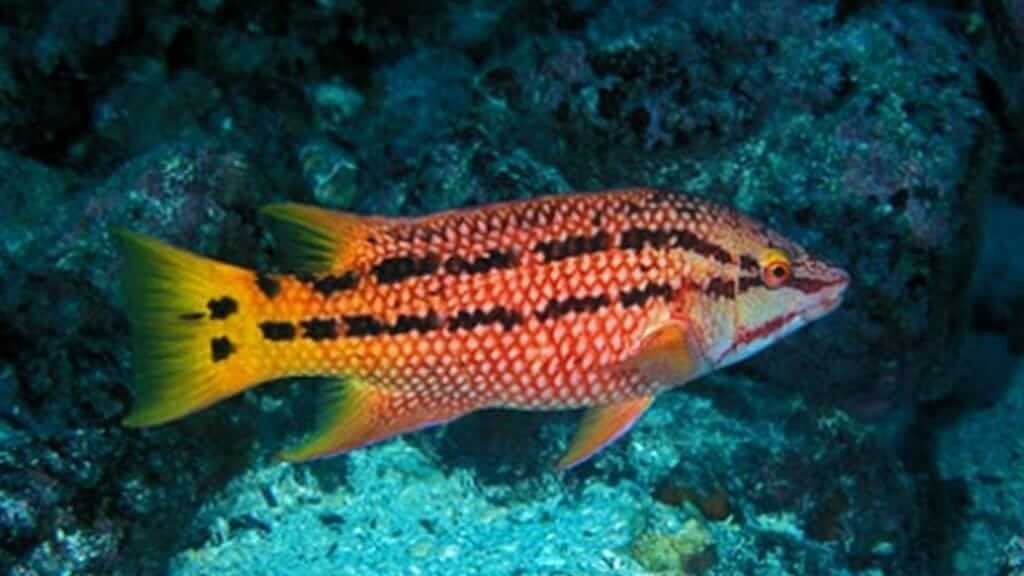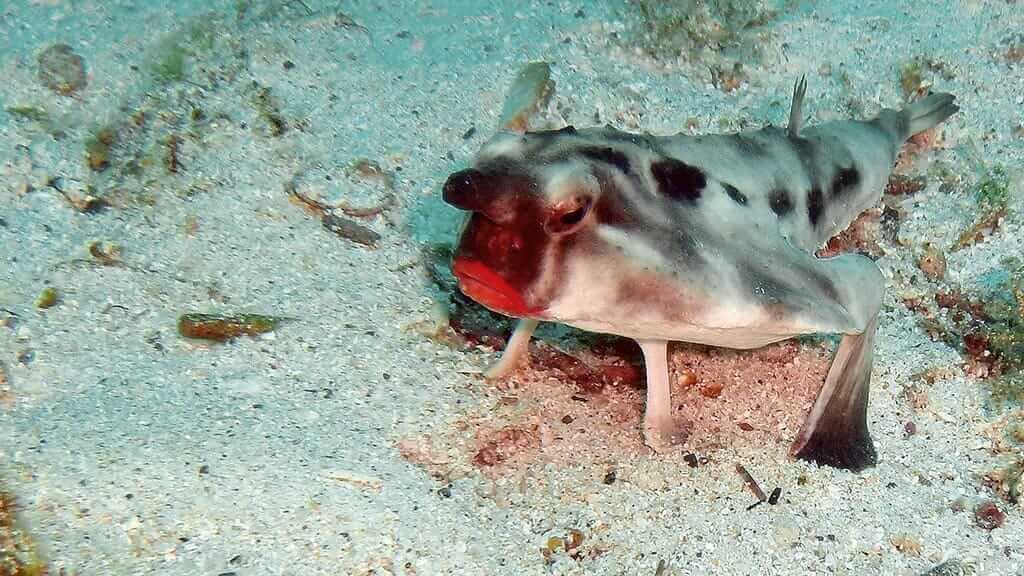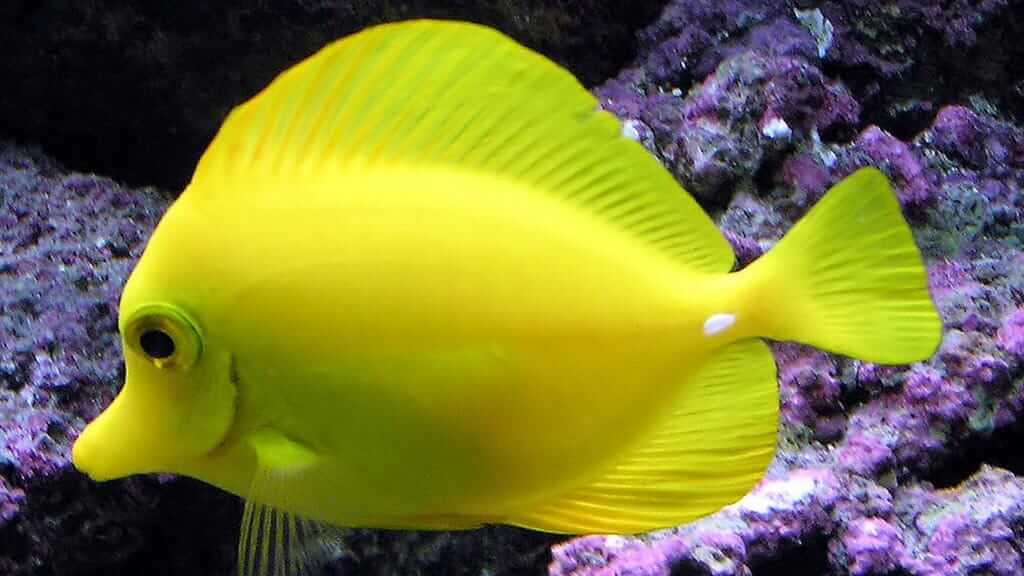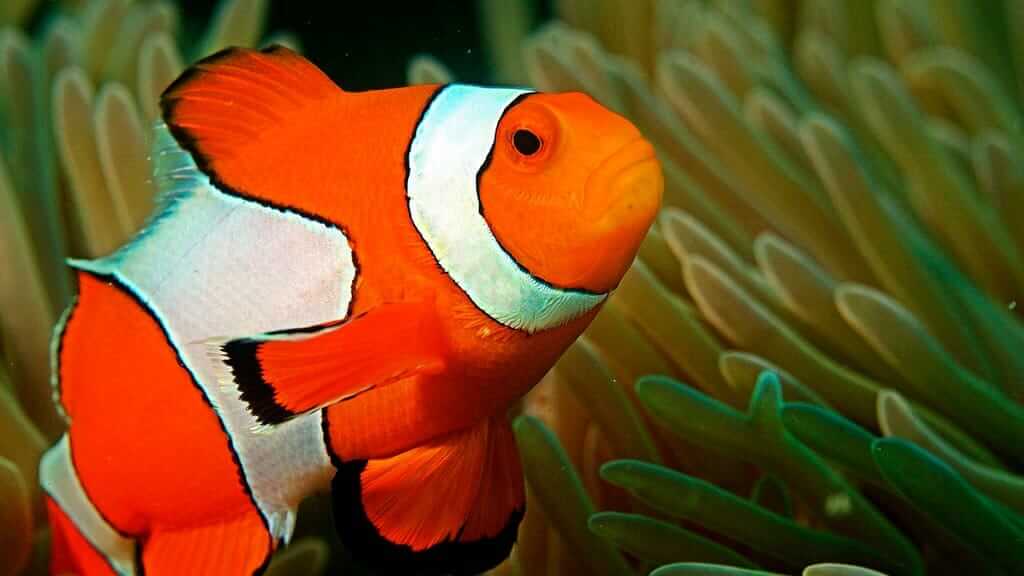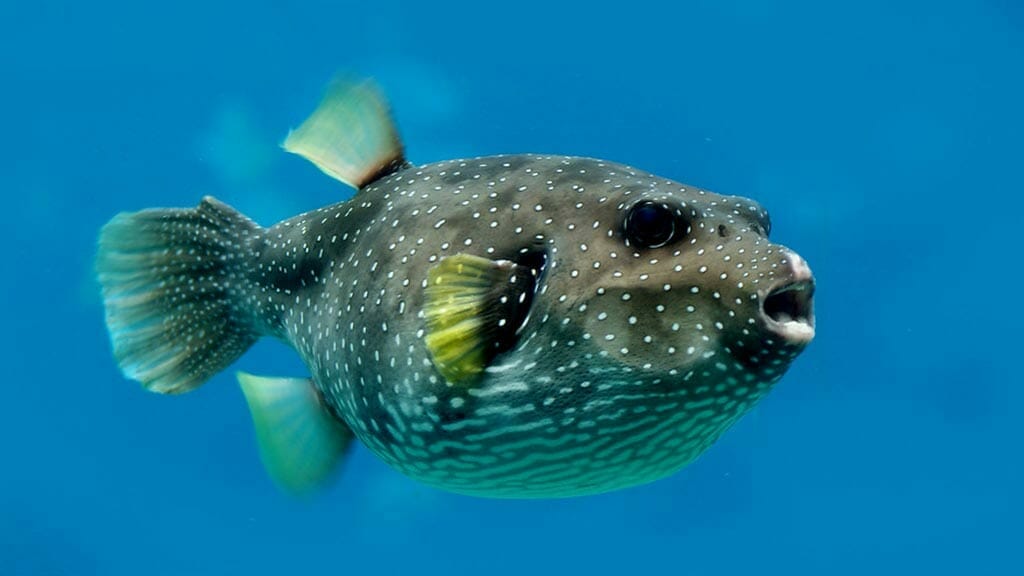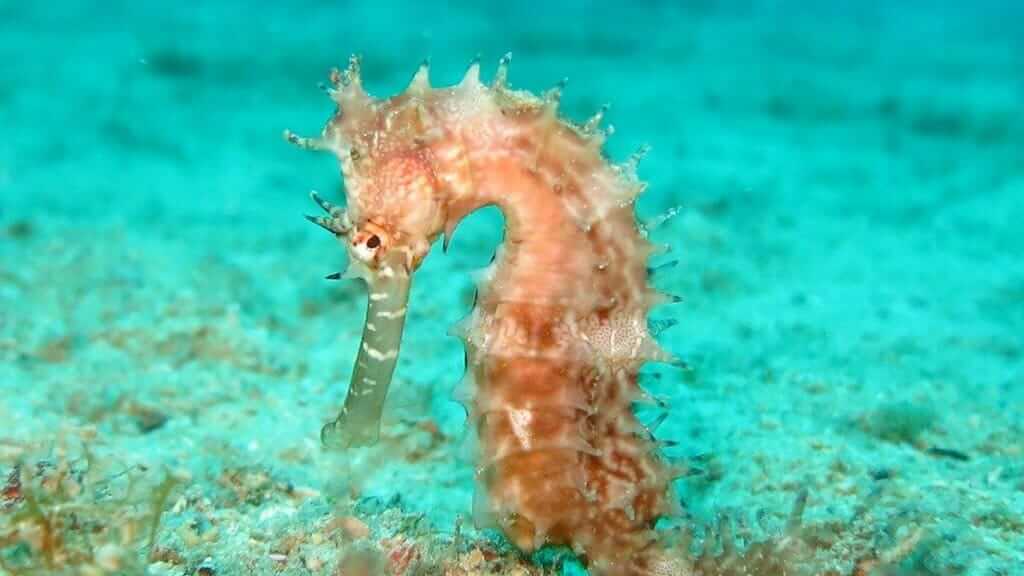GALAPAGOS FISH
The Galapagos Islands are one of the largest marine reserves in the world. The area offers protection to an incredible diversity of colourful Galapagos fish species. It is also one of the very best snorkeling or scuba destinations on the planet. In total, over 450 different Galapagos fish species can be found here. An unbelievable 10% of them are endemic to Galapagos, meaning they are only found here. This impressive biodiversity is largely due to the mix of habitats - from mangrove to coral, sandy bottoms & rocky shores. These areas make perfect Galapagos fish feeding stations. Many of the real-life counterparts of favorite characters from Pixar and Disney movies can be found here. Keep an eye out for Dori (surgeonfish) and Nemo (clownfish) from "Finding Nemo". Or Oscar (wrasse) and Lola (lionfish) from "A Shark’s Tale". Come check them out for yourself!
Read on to learn everything you need to know about Galapagos fish. Where are the best Galapagos snorkel sites to see colorful fish? Which Galapagos fish species will you be able to see?
SECURE YOUR GALAPAGOS TRAVEL
Get a FREE personalised quote todayHow to See Galapagos Fish?
It is kind of tough to see fish from the shore or from a boat, so you're going to have to get yourself wet! The two best ways to see Galapagos fish are by Snorkeling or Scuba diving. Either way, you are in for a real treat!
Opportunities to snorkel are commonplace every day at Galapagos. Snorkeling sites are diverse. In open water or shallow shorelines, with a great variety of marine species. Snorkeling mask, tube and fins are often included in tours, or available for a small fee.
Scuba diving is another great way to get closer to the underwater action. Day dives or week long live-aboard dive cruises are both great options. You'll be sharing the water with sharks, sea lions and of course colorful Galapagos reef fish.
Contact us for a FREE GALAPAGOS TOUR QUOTE for cruises or land based trips. We'll be delighted to help you plan your Galapagos vacation, including some cool underwater experiences!
Where can you snorkel with Galapagos fish?
There are so many top snorkel spots, but here are a few of our favorites:
Devils Crown (Floreana):
Devil's Crown is one of the most popular snorkel spots at Galapagos. This site is a volcanic crater that has been reclaimed by the sea. Galapagos fish species here include: rays (manta and sometimes spotted eagle), moray eels, sea turtles, scorpion fish, pencil sea urchins, yellow tailed grunts, as well as various species of shark.
Prince Philip Steps (Genovesa):
This is a deep water snorkeling site inside a large extinct caldera. A large variety of Galapagos fish tropical fish enjoy this area, protected from the open ocean. Species often spotted include: surgeon fish, butterfly hogfish, unicorn fish, king angelfish, parrot fish, manta rays and even scalloped hammerhead sharks if lucky.
Los Tuneles (southern Isabela):
An amazing snorkel or dive day trip from Puerto Villamil town. Good probabilities to see rays, whitetip reef sharks, and giant seahorse.
Punta Vicente Roca (northern Isabela):
The western coast of Isabela is only accessible aboard a cruise yacht. It is worthwhile though as Vicente Roca Point is one of the very best snorkel sites at Galapagos. See: moonfish, galapagos batfish, parrot fish, wrass, frogfish, rays, and sometimes port jackson shark or mola mola.
North Seymour:
Another great spot with a wide variety of species such as king angelfish, parrot fish, hogfish, rays, and whitetip reef sharks.
Galapagos fish can be spotted year round at all of these snorkel sites. The greatest diversity and numbers are present from May/June through to November. During these months the cold Humboldt current brings rich nutrients north from the Antarctic. So food is adundant Galapagos marine species.
Contact us for a FREE GALAPAGOS TOUR QUOTE, we’ll be happy to help you organise your Galapagos vacation to snorkel with Galapagos Fish and all of the other unique & wonderful wildlife here.
What fish can you see while snorkeling in Galapagos?
What Galapagos fish can you see? Read on for some of the species to keep an eye out for.
King Angelfish
This is one of the most stunning Galapagos fish species. They are popular among snorkelers for their large size (up to 35cm long) and beautiful blue, orange, yellow and white color combinations.
Parrot Fish
This species is named after the uncanny likeness of its mouth with the beak of a parrot. The four main parrot fish found in Galapagos waters are: blue chin, bumphead, bicolor and azure. Parrot fish are important reef cleaners. They spend much of their time eating algae and dead organic matter.
Pacific Creolefish
The Pacific Creolefish is recognised by its salmon colored underbelly, and grey/Brown/red back. They form an important part of the diet of blue footed boobies, easily caught as they school together feeding on plankton.
Yellowtail Surgeonfish
A common sight for snorkelers at Galapagos. Yellowtail Surgeonfish love coral reefs around the world, hanging out in large schools to feed on sea algae. Take special care not to handle them, to avoid the sharp spines on their tail.
Sun Fish (Mola Mola)
Mola Mola are unmistakable due to their huge size and unusual appearance. They grow up to 1000kg, making them the largest bony fish in the world. Two species of Sun Fish are found in Galapagos waters: the Ocean Sun Fish and the Southern Sun Fish. Their name originates due to their preference for swimming close to the surface to bask in the sun.
Hieroglyphic Hawkfish
Also known as the Giant Hawkfish, this species is popular for its lovely colors. Olive green skin combines with pronounced golden stripes, to resemble a hieroglyph.
Sergeant Major Fish
The Sergeant Major fish is a species of Damsel fish. The name comes from their black colored stripes, resembling those of a military sergeant. Sergeant Major fish are common at Galapagos coral reefs. They swim over reef tops in schools of several hundred during the day to feed, and seeking refuge in crevices during the night.
Moray Eels
16 different species of Moray Eel call the Galapagos Marine Reserve home. Two beautiful species to try to spot are the black and white striped zebra moray eel, and uniquely camouflaged speckled moray.
Blacknosed Butterflyfish
The wonderfully named Blacknosed Butterflyfish are a cleaner fish species. They wait at cleaner stations to feed on parasites from larger fish. They have a yellow/silver compressed body, with black band along the base of the dorsal fin, and attractive facial markings.
Yellow-tailed Grunt
An unusual species that can often be sighted at Devils Crown snorkel site at Floreana island. This curious Galapagos fish is so named due to the strange sound they make by grinding teeth together when disturbed.
Galapagos Hogfish (Harlequin Wrasse)
The Galapagos Hogfish is a bottom-grazer species. They feed on crab, shrimp, eggs, snails and worms at the sea bottom.
Galapagos Batfish (Red-lipped Batfish)
The Galapagos Batfish is a strange creature for sure. Easily identified by their bright red lips, almost as if wearing lipstick. They are poor swimmers, usually found walking the sea floor on their pectoral and pelvic fins, giving the appearance of a bat.
Yellow Tang
Yellow Tangs hang out in crevasses around reefs and in shallow caves and cracks of volcanic underwater walls. They are the only completely yellow reef fish in Galapagos waters. They like to eat algae from the shells of sea turtles and other marine creatures. Yellow Tangs are sometimes seen off the shores of Santa Cruz island. Otherwise the best bet is on a dive cruise to Darwin and Wolf Islands.
Clownfish
Thanks to Nemo in the movie, Clownfish are unmistakable. Their bright orange and white colorings is a giveaway to any kid. True to their name, this agile fish darts back and forth, coming up close to snorkelers and divers. Clownfish feed on plankton and algae in teams of 2 or 3 around shallow water reefs all over the islands.
Lionfish
The spectacular Lionfish is an invasive species to Galapagos waters. This canivorous fish is tribally adorned with tentacles protruding from above and below their mouths. Their colors range from brown and maroon, with white stripes circling their body in vertical rows from head to tail. The long spines along their back deliver a toxic sting to any who dare get close enough. They are ferocious hunters, feeding on shrimp, reef fish, and crabs by ambushing them from hiding places in volcanic rocks and fingers of coral reef. Lionfish can expand their stomachs up to thirty times its normal volume, eating until bloated after the food runs out.
Cortez Rainbow Wrasse
Wrasse are one of the marine cleaning Galapagos fish species. They are found around coral reefs, on wall dives, and around diving sites where sharks, rays, sea turtles, and larger fish gather. As juveniles, they have yellow, black, and red horizontal stripes. The older they become, the more pronounced the black stripe is, and the more diminished the yellow.
Pufferfish
Can sometimes be seen close to the surface from boats and on the sandy, flat bottoms of shallow lagoons. Pufferfish are slow-moving and clumsy making it impossible to outrun predators. Instead, when in danger, they swallow large amounts of water to inflate their elastic stomach. Growing to the size of a big, fat ball might seem odd, but it does ensure that they won’t fit into a predator's mouth.
Pacific Seahorse (Giant Seahorse)
The Pacific seahorse can grow to between 20-30cm in length, and is the only seahorse species found in the Eastern Pacific. The best place to see them at Galapagos is Los Tuneles snorkel site on Isabela island.
Rays
Rays are a common right across the Galapagos archipelago, and can be easy to spot even from aboard a yacht. There are 15 different Galapagos ray species including: spotted eagle, marble, sting, manta and golden rays.
In conclusion, there are so many species of colorful Galapagos fish to discover. They transform Galapagos coral reefs into a kaleidoscope of colors. So what are you waiting for? Get your snorkel on and let's dive right in!
If you enjoyed this post, then check out more information about Galapagos Sharks, Dolphins or Whales.
Contact us for more information to organise your own Galapagos vacation.


